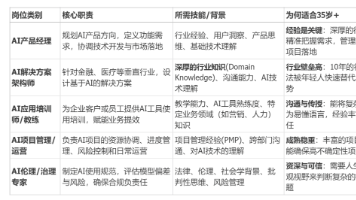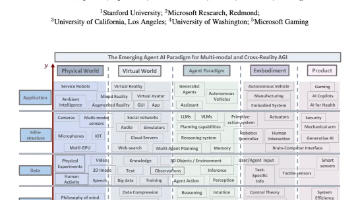人工智能如何利用新闻大数据进行舆情分析?
人工智能技术为新闻大数据的舆情分析提供了强大的工具,从数据采集到情感分析、主题建模、实体识别,再到实时监测和可视化,每一步都依赖于先进的算法和模型。通过代码示例可以看到,开源工具和预训练模型大大降低了技术门槛,使得舆情分析更加高效和精准。
人工智能在新闻大数据舆情分析中的应用
舆情分析是通过对大量新闻、社交媒体等文本数据的挖掘和分析,了解公众对某一事件、话题或品牌的看法和态度。人工智能技术,尤其是自然语言处理(NLP)和机器学习,在舆情分析中发挥了重要作用。以下从技术层面探讨如何利用新闻大数据进行舆情分析。
数据采集与预处理
新闻大数据的采集通常通过网络爬虫实现,爬取新闻网站、社交媒体平台等公开数据。数据预处理包括去重、清洗、分词等步骤,为后续分析提供结构化数据。
import requests
from bs4 import BeautifulSoup
import jieba
# 示例:爬取新闻标题
def crawl_news(url):
response = requests.get(url)
soup = BeautifulSoup(response.text, 'html.parser')
titles = [title.text for title in soup.find_all('h2')]
return titles
# 示例:中文分词
def tokenize(text):
return list(jieba.cut(text))
# 使用示例
news_titles = crawl_news("https://example-news-site.com")
tokenized_titles = [tokenize(title) for title in news_titles]
情感分析
情感分析是舆情分析的核心任务之一,通过NLP模型判断文本的情感倾向(正面、负面或中性)。常用的方法包括基于词典的方法和基于深度学习的方法。
from transformers import pipeline
# 使用预训练的情感分析模型
sentiment_analyzer = pipeline("sentiment-analysis", model="bert-base-chinese")
# 示例:分析新闻标题情感
def analyze_sentiment(text):
result = sentiment_analyzer(text)
return result[0]['label'], result[0]['score']
# 使用示例
title = "人工智能技术助力舆情分析"
label, score = analyze_sentiment(title)
print(f"情感: {label}, 置信度: {score}")
主题建模
主题建模用于从大量新闻文本中提取潜在主题,帮助理解公众关注的焦点。常用的算法包括LDA(Latent Dirichlet Allocation)和BERTopic。
from sklearn.feature_extraction.text import CountVectorizer
from sklearn.decomposition import LatentDirichletAllocation
# 示例:LDA主题建模
def topic_modeling(texts, n_topics=3):
vectorizer = CountVectorizer()
X = vectorizer.fit_transform(texts)
lda = LatentDirichletAllocation(n_components=n_topics)
lda.fit(X)
return lda, vectorizer
# 使用示例
texts = ["人工智能在舆情分析中的应用", "大数据技术的最新进展", "新闻媒体的数字化转型"]
model, vectorizer = topic_modeling(texts)
for topic_idx, topic in enumerate(model.components_):
print(f"主题 {topic_idx}:")
print([vectorizer.get_feature_names_out()[i] for i in topic.argsort()[-3:]])
实体识别与关系抽取
实体识别(NER)和关系抽取帮助识别新闻中的关键人物、地点、组织及其关系,进一步丰富舆情分析的内容。
from transformers import pipeline
# 使用预训练的NER模型
ner_pipeline = pipeline("ner", model="bert-base-chinese")
# 示例:识别新闻中的实体
def extract_entities(text):
entities = ner_pipeline(text)
return [(entity['word'], entity['entity']) for entity in entities]
# 使用示例
news_text = "北京市政府宣布将加大对人工智能产业的扶持力度。"
entities = extract_entities(news_text)
print(entities)
舆情可视化
舆情分析的结果通常通过可视化工具展示,如词云、时间序列图、情感分布图等。
import matplotlib.pyplot as plt
from wordcloud import WordCloud
# 示例:生成词云
def generate_wordcloud(texts):
text = " ".join(texts)
wordcloud = WordCloud(font_path="simhei.ttf").generate(text)
plt.imshow(wordcloud, interpolation='bilinear')
plt.axis("off")
plt.show()
# 使用示例
generate_wordcloud(news_titles)
实时舆情监测
结合流数据处理技术(如Apache Kafka和Spark Streaming),可以实现对新闻大数据的实时舆情监测。
from pyspark.sql import SparkSession
from pyspark.streaming import StreamingContext
# 示例:Spark Streaming实时处理
spark = SparkSession.builder.appName("RealTimeSentimentAnalysis").getOrCreate()
ssc = StreamingContext(spark.sparkContext, batchDuration=10)
def process_rdd(rdd):
sentiments = rdd.map(lambda text: analyze_sentiment(text))
sentiments.pprint()
# 模拟数据流
stream = ssc.socketTextStream("localhost", 9999)
stream.foreachRDD(process_rdd)
ssc.start()
ssc.awaitTermination()
总结
人工智能技术为新闻大数据的舆情分析提供了强大的工具,从数据采集到情感分析、主题建模、实体识别,再到实时监测和可视化,每一步都依赖于先进的算法和模型。通过代码示例可以看到,开源工具和预训练模型大大降低了技术门槛,使得舆情分析更加高效和精准。
更多推荐
 已为社区贡献8条内容
已为社区贡献8条内容








所有评论(0)